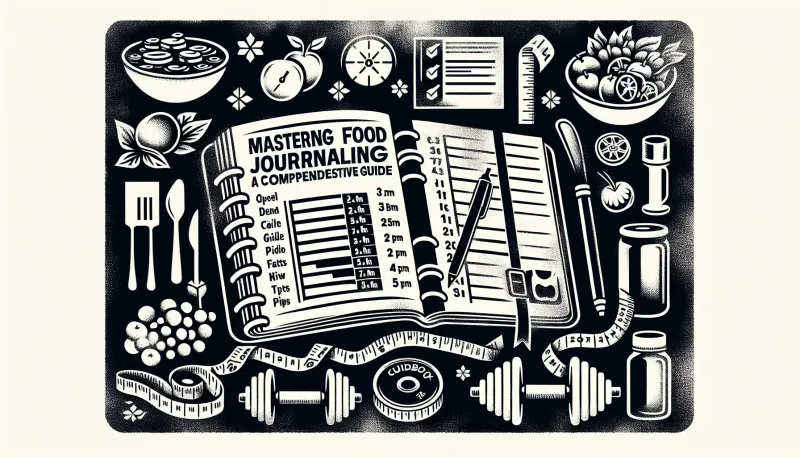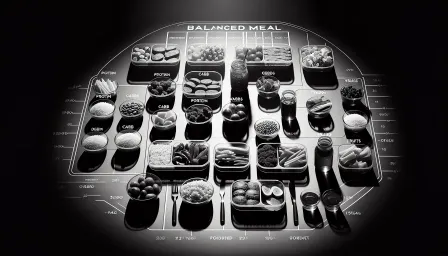Master Food Journaling and Calorie Tracking: A Comprehensive Guide

Discover the ultimate guide to food journaling and calorie tracking. Learn effective strategies, tools, and tips for a healthier diet and lifestyle.
Food journaling and calorie tracking have become essential tools for anyone looking to take control of their diet and achieve their health goals. In this comprehensive guide, we’ll explore how these practices work, the benefits they offer, and tips for effective journaling and tracking.
What is Food Journaling?
Food journaling involves recording everything you eat and drink throughout the day. This practice can be done on paper, using a smartphone app, or through an online platform. The goal is to be mindful of your eating habits and make informed decisions about your diet.
Benefits of Food Journaling
- Increased Awareness: By tracking what you eat, you become more aware of your food choices and portion sizes.
- Identifying Patterns: Food journaling helps you spot eating patterns, including emotional eating and triggers for unhealthy snacking.
- Accountability: Keeping a food journal holds you accountable to your dietary goals, whether it’s weight loss, managing a health condition, or improving nutrition.
- Improved Nutrient Intake: By reviewing your journal, you can ensure you’re getting a balanced intake of nutrients, vitamins, and minerals.
What is Calorie Tracking?
Calorie tracking is the process of recording the number of calories consumed through food and beverages each day. This practice is often used for weight management, as it helps individuals stay within their daily calorie goals.
Benefits of Calorie Tracking
- Weight Management: By tracking your calories, you can create a calorie deficit or surplus, depending on whether your goal is weight loss or gain.
- Informed Food Choices: Knowing the caloric content of foods helps you make healthier choices that align with your goals.
- Improved Portion Control: Calorie tracking makes you more aware of portion sizes, which can help prevent overeating.
How to Start Food Journaling and Calorie Tracking
1. Choose Your Tools
Select tools that fit your lifestyle and preferences. Options include:
- Paper Journal: A traditional approach that involves writing down your meals in a notebook.
- Mobile Apps: Apps like MyFitnessPal or Lose It! offer easy tracking, access to food databases, and calorie counting features.
- Online Platforms: Websites like SparkPeople offer extensive tracking options and community support.
2. Set Clear Goals
Clearly define your health goals. Are you looking to lose weight, manage a medical condition, or improve your overall nutrition? Setting specific, measurable, attainable, relevant, and time-bound (SMART) goals can help guide your food journaling and calorie tracking efforts.
3. Record Everything Consistently
Consistency is key to obtaining accurate insights from your food journal. Record every meal, snack, and beverage, including portion sizes and preparation methods. Honest and accurate entries will yield the best results.
4. Analyze and Adjust
Regularly review your journal to identify patterns and areas for improvement. Use this information to make informed dietary adjustments. For example, if you notice frequent high-calorie snacks, consider healthier alternatives or portion control strategies.
Advanced Tips for Effective Food Journaling and Calorie Tracking
1. Use a Food Scale
A food scale provides precise measurements of portion sizes, which enhances the accuracy of your calorie tracking. Weighing food portions can prevent underestimating or overestimating calorie intake.
2. Track Beyond Calories
Consider tracking macronutrients (carbohydrates, proteins, and fats) and micronutrients (vitamins and minerals) to gain a deeper understanding of your dietary habits. Balancing these nutrients is crucial for overall health and wellness.
3. Stay Hydrated
Don’t forget to track your water intake. Proper hydration is essential for digestion, metabolism, and overall well-being. Many tracking apps allow you to log water consumption along with food intake.
4. Plan Ahead
Planning meals and snacks in advance can streamline your tracking process and help you stay within your calorie and nutrient goals. Meal prepping can also save time and reduce the temptation of unhealthy convenience foods.
5. Seek Professional Guidance
If you have specific health conditions or dietary needs, consider consulting a registered dietitian or nutritionist. They can provide personalized guidance and help you create an effective food journaling and calorie tracking plan.
Common Challenges and How to Overcome Them
1. Time Constraints
Many individuals find it challenging to maintain a food journal due to time constraints. To overcome this, set aside a specific time each day for journaling, such as after meals or before bed. Using mobile apps can also speed up the process.
2. Forgetting to Log
Forgetting to log meals and snacks is a common issue. Setting reminders on your smartphone or using apps with notification features can help you stay consistent. Carrying a small notebook or using voice notes can also be useful for quick entries.
3. Estimating Portion Sizes
Accurately estimating portion sizes can be challenging. Visual aids, such as comparing portions to common objects (e.g., a tennis ball for a cup of vegetables), can help. Using measuring cups and spoons initially can train your eye for better estimation.
Conclusion
Food journaling and calorie tracking are powerful tools for achieving your health and nutrition goals. By becoming more aware of your eating habits and making informed decisions, you can take control of your diet and improve your overall well-being. Start by choosing the right tools, setting clear goals, and staying consistent with your tracking efforts. With time and practice, you’ll master the art of food journaling and calorie tracking, paving the way for a healthier and more balanced lifestyle.



























